China’s stocks and property sector are tanking: what it means for Aussie investors
This morning, a group of related charts caught my eye. In today’s ChartWatch, I draw your attention to this important group, discuss how you can keep track of them yourself, and investigate their likely impact on the Australian stock market. The group of charts are related to Chinese stocks, particularly property stocks.
Big trouble in not-so-little China
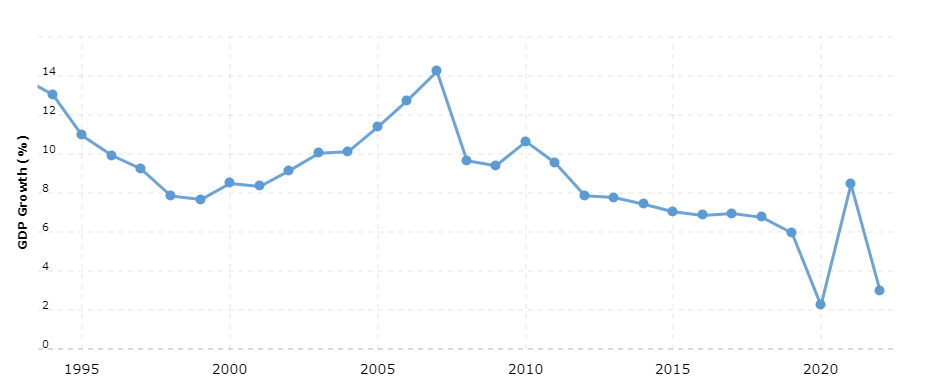
China GDP growth last 30-years. Source: Macrotrends, Data from the World Bank
Much of China’s growth over the last 20 years can be attributed to its massive property sector. It accounts for approximately 30% of the country’s GDP and is a massive employer, wealth generator, and consumer of raw materials like iron ore, copper, and nickel. A strike in any one of these three key pillars could have major ramifications for Aussie stocks – particularly those in our resources sector.
These are the major stock market indices I check each day to keep track of what’s happening in the Chinese economy:
- Shanghai Composite Index (000001)
- FTSE China A50 Index (CN1!)
- China Mainland Real Estate Index (000948)
- Hang Seng Mainland Properties Index (HSMPI)
- Hang Seng China A Properties Index (HSCAP)
The best way for your to play along at home is to find these charts in popular market data and the charting platform TradingView. I’ve included the TradingView search code for each index in brackets to make them easier for you to find. Let’s investigate each index in detail.
Shanghai Composite Index (000001)
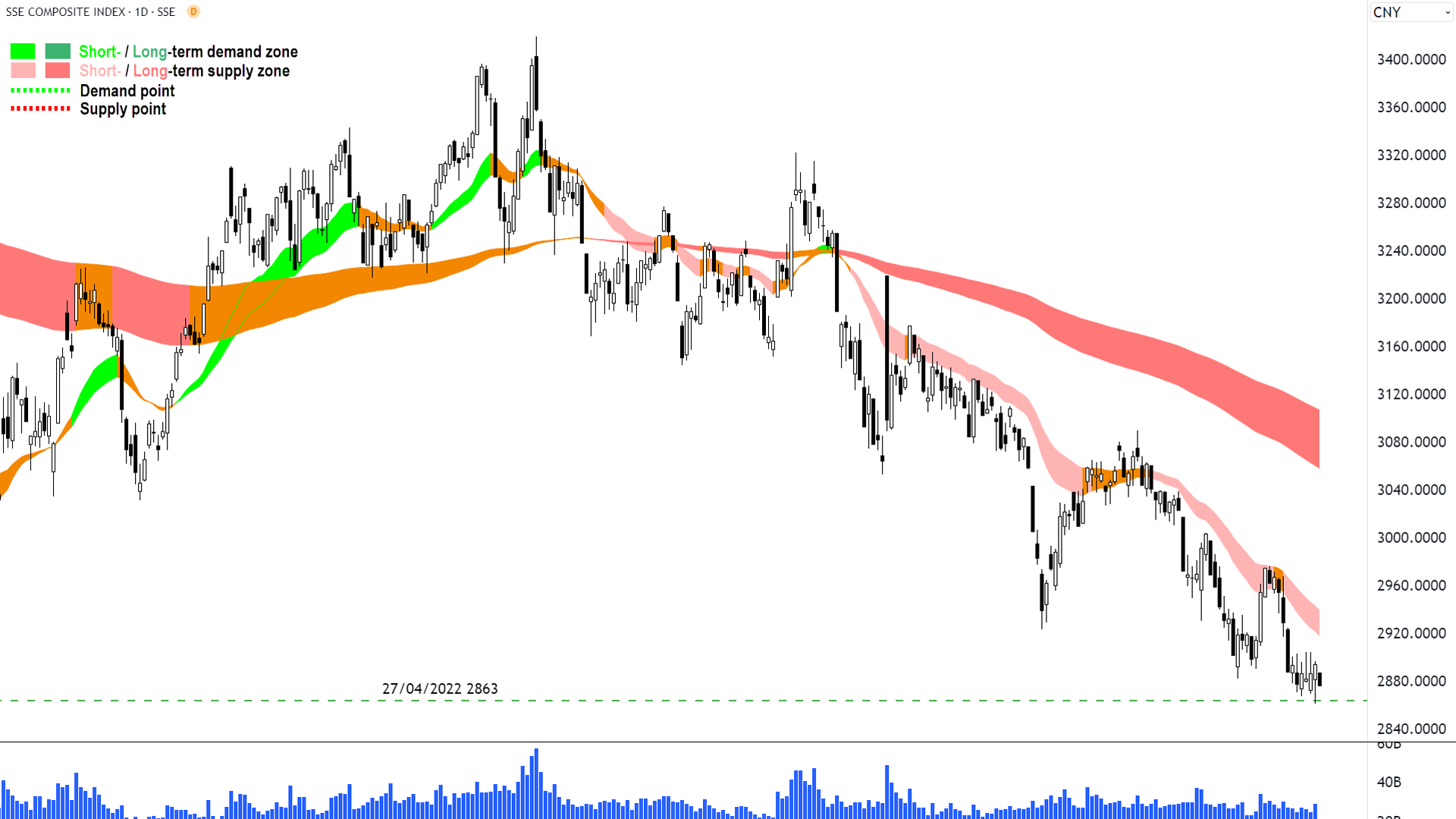
SSE Composite Index daily chart. Source: TradingView
TThe Shanghai Stock Exchange (SSE) Composite Index contains all China-A and China-B stocks. Both classes of stocks contain mainland-based companies, but they differ in terms of local-versus-foreign ownership restrictions, as well as restrictions on which currency each class may be quoted in.
Given it encompasses both classes of Chinese stocks, the SSE Composite is the broadest measure of the Chinese stock market. If, like me, you believe a stock market is the best barometer of a country’s economic performance, then the SSE Composite is also the best barometer of the Chinese economy.
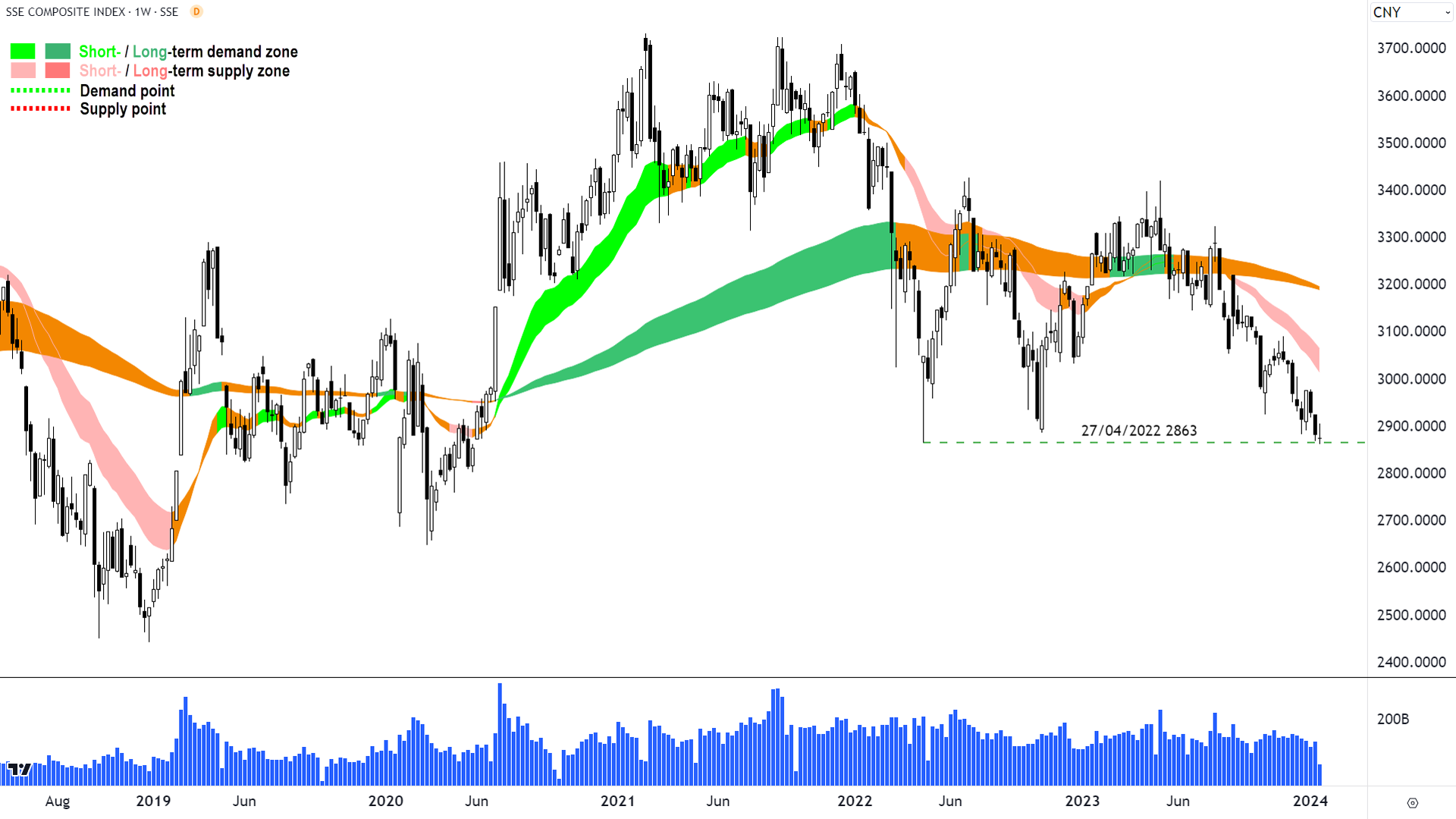
SSE Composite Index weekly chart. Source: TradingView
Zooming out to the weekly chart above, we can see the SSE Composite is nearing an important technical support level in the 2863 low set on 27 April 2022. A close below here could see the index probe lower support levels around the March 2020 low of 2643.
FTSE China A50 Index (CN1!)
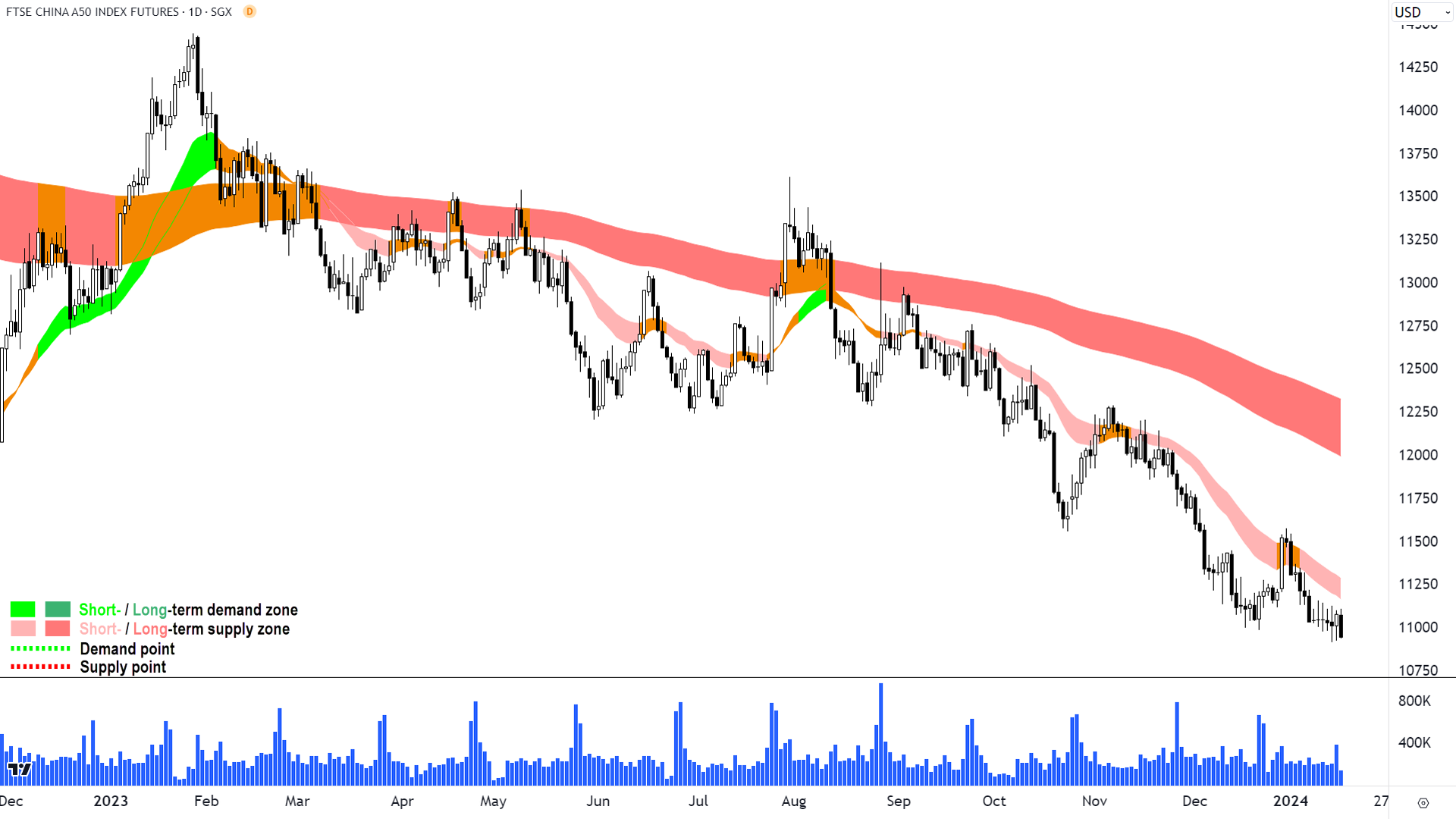
China B-stocks are subject to the influence of international fund flows, which are subject to international economic growth, interest rate differentials, and currency fluctuations. China A-stocks are not.
For me, the China A50 represents how mainland Chinese feel about their stock market. They’re the closest to the ground with respect to what’s happening in the Chinese economy, so I feel the China A50 is an important piece of the puzzle when analysing Chinese stocks.
With this in mind, looking at the chart of the China A50 above, one must question the current health of the Chinese stock market and economy. This chart is a picture of excess supply. In fact, if you asked me to define excess supply, this is the chart I would use as a case study! There’s absolutely nothing in this chart to suggest the prevailing short and long-term downtrends are about to end any time soon.
CSI China Mainland Real Estate Index (000948)
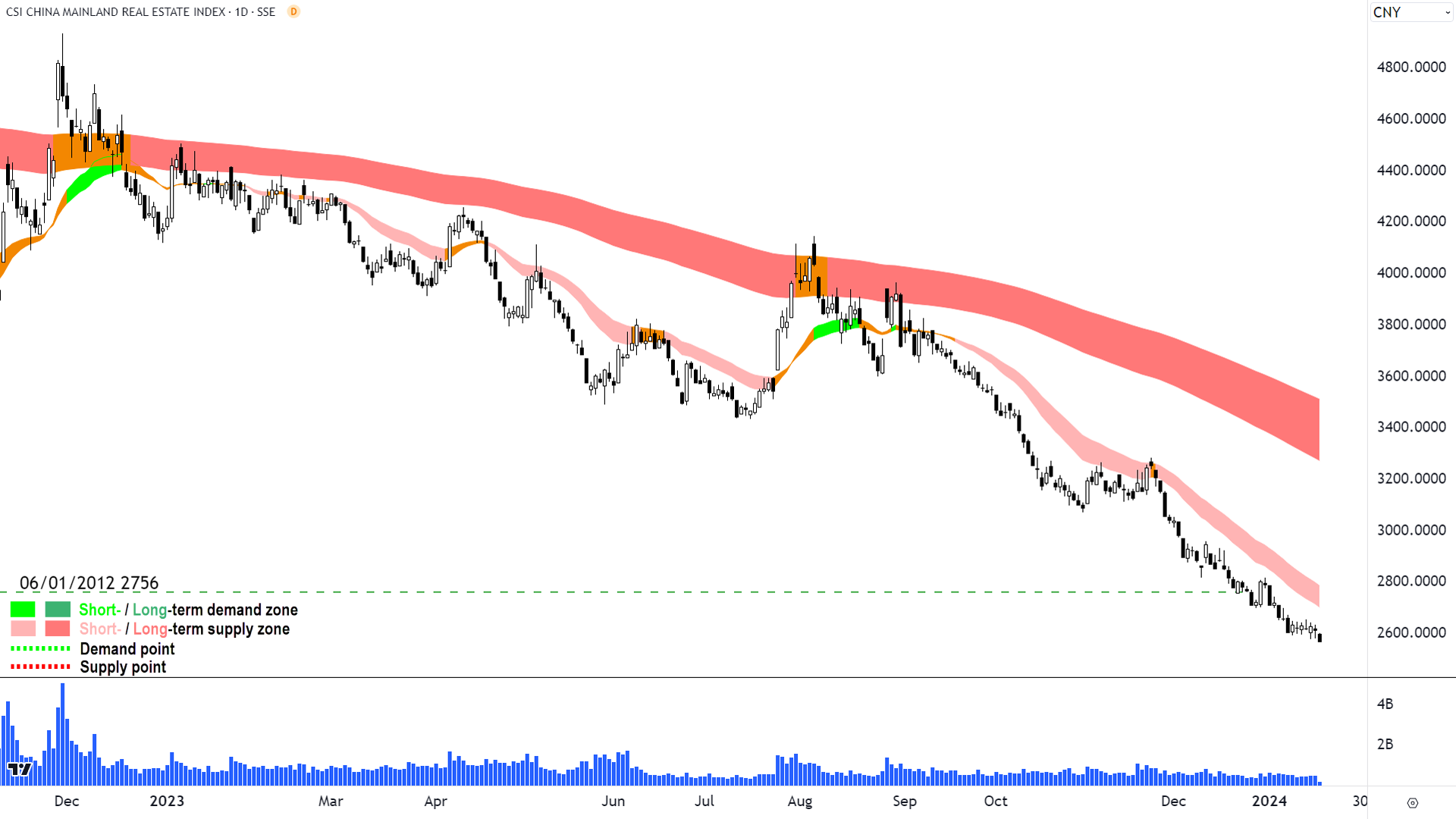
While on the first pass, the short- and long-term trends look just as terrible as their counterparts in the China A50, you should note the scale on the Mainland Real Estate Index chart. Sure, Chinese stocks are falling, but Chinese property stocks are getting belted! Chinese property stocks are down 22% since their November peak (compared with general strength in most major global market stock indices over the same time), and they’re down 41% over the last 12 months.
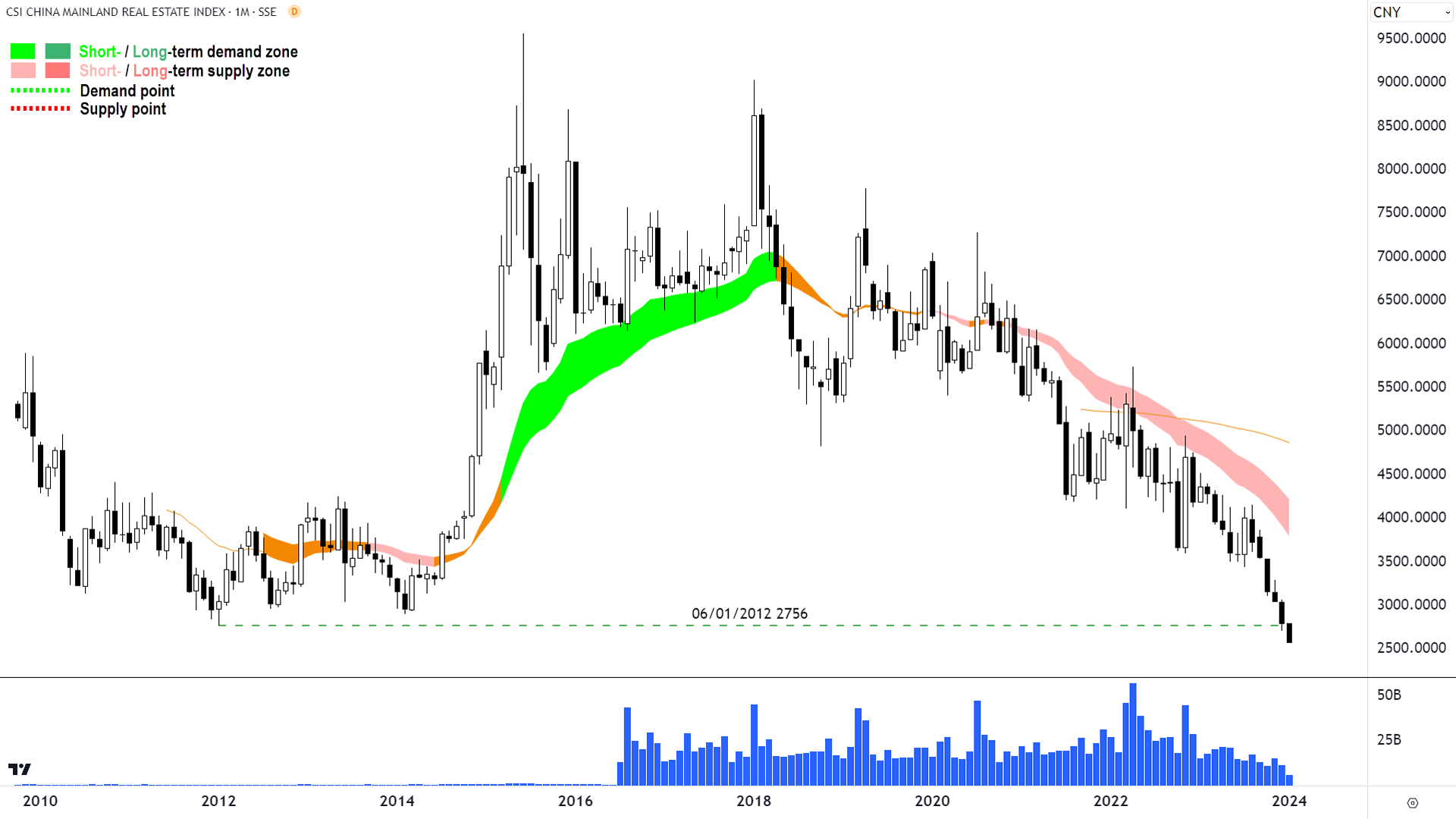
Hang Seng Mainland Properties Index (HSMPI)
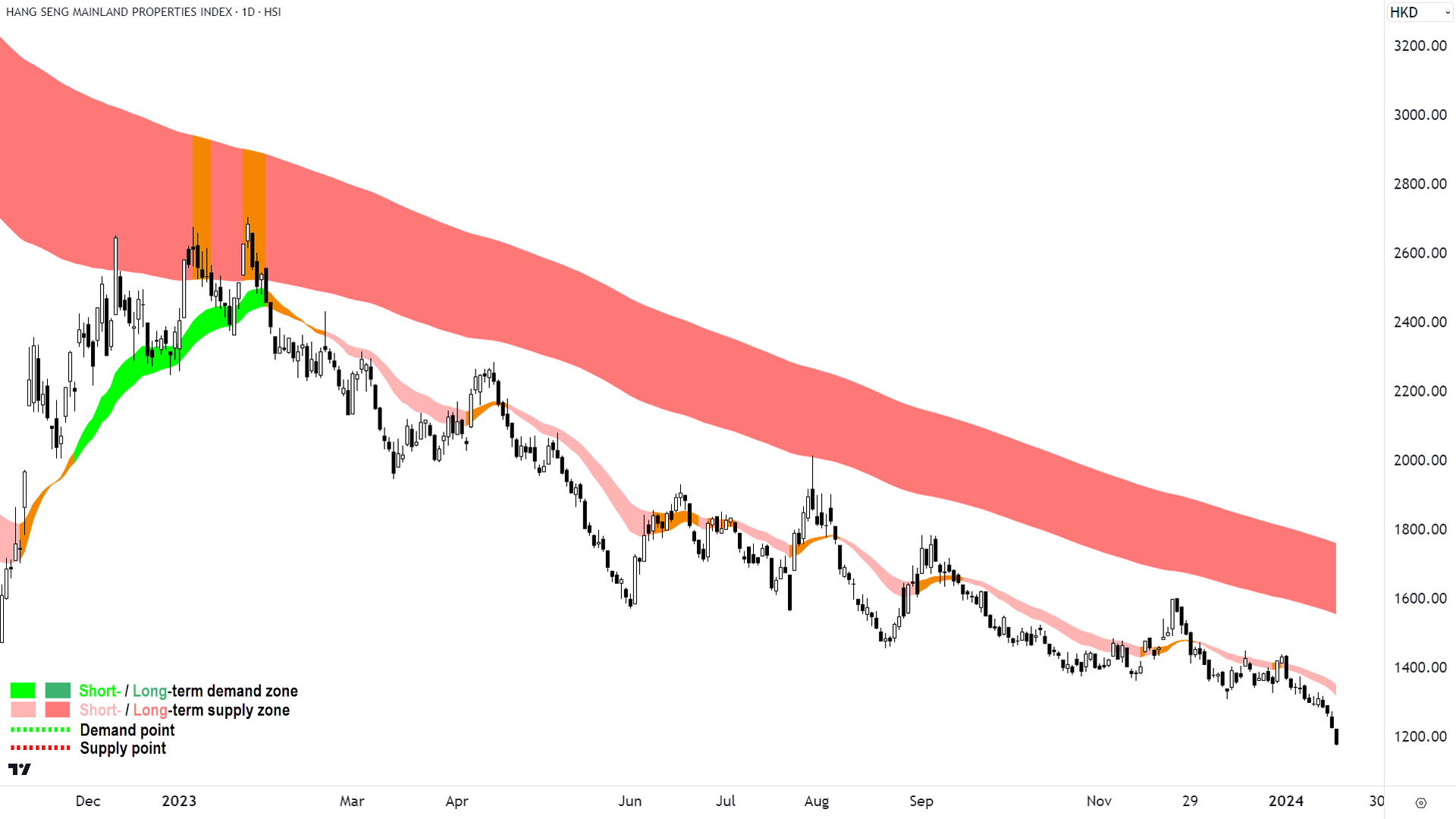
I think you’re starting to get the message in terms of the techincals - they’re also terrible here. In terms of performance, we’re talking about a 52% drop in this index over the last 12 months, and looking at today’s candle, that number's still counting.
Hang Seng China A Properties Index (HSCAP)
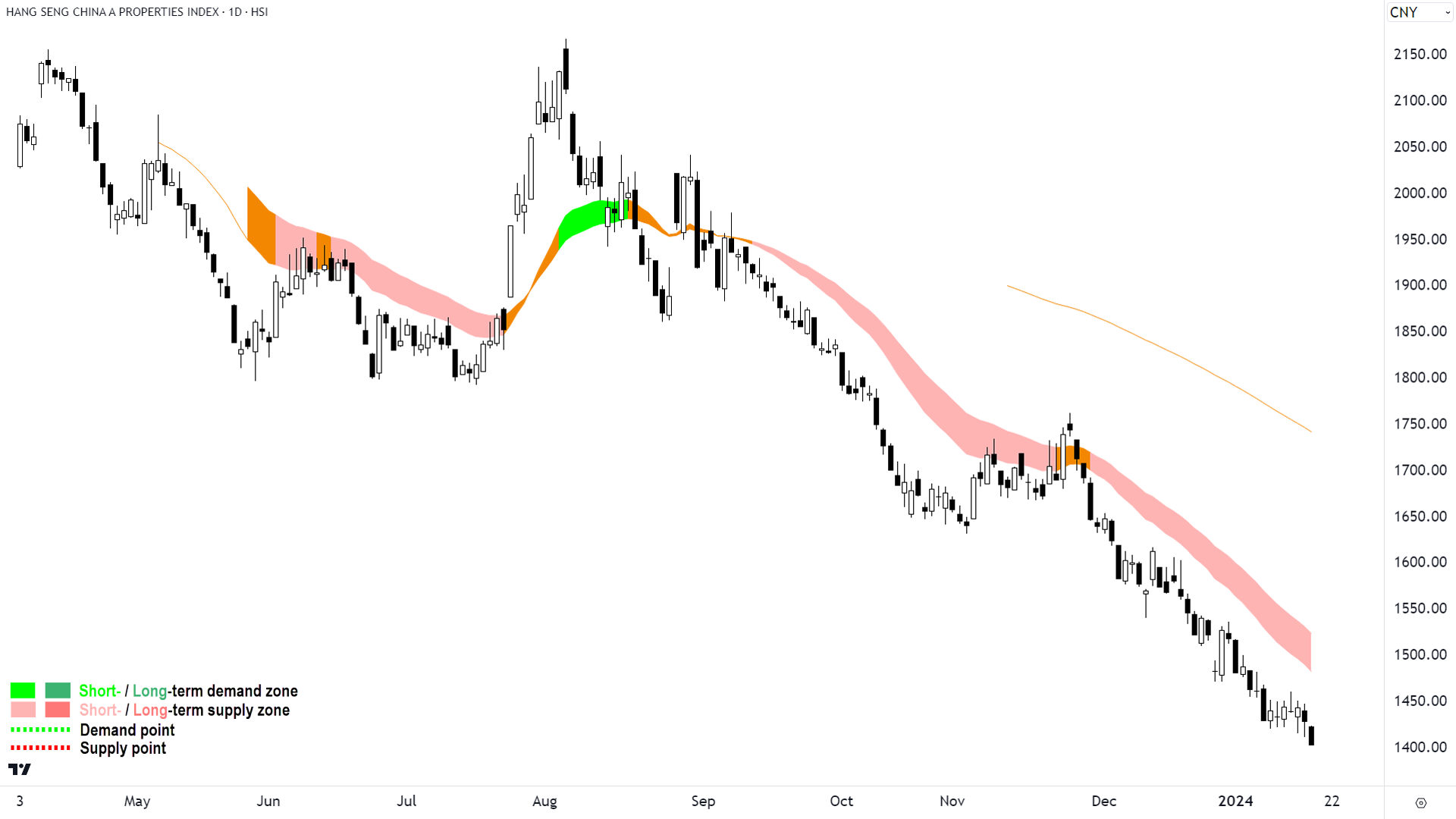
TradingView has less data on this index, but I think you’ll agree there’s more than enough to get an idea of what’s going on with China-A property stocks.
Coming up…
In the next edition of my ChartWatch series, which I publish regularly on Livewire's sister site Market Index, I’ll review the current technical indicators and outlook for major Australian resource companies, including BHP Group (BHP), Rio Tinto (RIO), Fortescue (FMG), IGO, Sandfire Resources (SFR) and more…so stay tuned!
This article originally appears on Market Index on 17 January 2024.
5 topics
5 stocks mentioned

